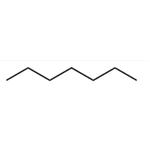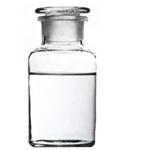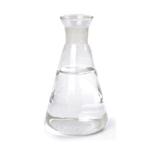Heptane
- CAS No.
- 142-82-5
- Chemical Name:
- Heptane
- Synonyms
- N-HEPTANE;heptanes;Heptan;1-HEPTANE;NORMAL HEPTANE;Aliphatic hydrocarbon;Gettysolve-C;Dipropylmethane;heptane(n-heptane);Eptani
- CBNumber:
- CB0426554
- Molecular Formula:
- C7H16
Lewis structure

- Molecular Weight:
- 100.2
- MDL Number:
- MFCD00009544
- MOL File:
- 142-82-5.mol
- MSDS File:
- SDS
| Melting point | −91 °C(lit.) |
|---|---|
| Boiling point | 98 °C(lit.) |
| Density | 0.684 g/mL at 20 °C |
| vapor density | 3.5 (vs air) |
| vapor pressure | 40 mm Hg ( 20 °C) |
| refractive index |
n |
| Flash point | 30 °F |
| storage temp. | Store at +5°C to +30°C. |
| solubility | acetone: miscible(lit.) |
| form | Liquid |
| pka | >14 (Schwarzenbach et al., 1993) |
| Specific Gravity | 0.684 (20/4℃) |
| color | ≤10(APHA) |
| Odor | Gasoline. |
| Relative polarity | 0.012 |
| explosive limit | 1-7%(V) |
| Odor Threshold | 0.67ppm |
| Evaporation Rate | 2.8 |
| Water Solubility | practically insoluble |
| λmax |
λ: 200 nm Amax: ≤1.0 λ: 225 nm Amax: ≤0.10 λ: 250 nm Amax: ≤0.01 λ: 300-400 nm Amax: ≤0.005 |
| Merck | 14,4659 |
| BRN | 1730763 |
| Henry's Law Constant | 0.901, 1.195, and 1.905(atm?m3/mol) at 26.0, 35.8, and 45.0 °C, respectively (dynamic headspace, Hansen et al., 1995) |
| Exposure limits | NIOSH REL: TWA 85 ppm (350 mg/m3), 15-min ceiling 440 ppm (1,800 mg/m3), IDLH 750 ppm; OSHA PEL: TWA 500 ppm (2,000 mg/m3); ACGIH TLV: TWA 400 ppm, STEL 500 ppm (adopted). |
| Dielectric constant | 1.9(20℃) |
| Stability | Stable. Incompatible with oxidizing agents, chlorine, phosphorus. Highly flammable. Readily forms explosive mixtures with air. |
| InChIKey | IMNFDUFMRHMDMM-UHFFFAOYSA-N |
| LogP | 4.660 |
| Indirect Additives used in Food Contact Substances | HEPTANE |
| FDA 21 CFR | 175.105; 175.300; 177.1580; 178.2650 |
| CAS DataBase Reference | 142-82-5(CAS DataBase Reference) |
| EWG's Food Scores | 1-2 |
| FDA UNII | 456148SDMJ |
| NIST Chemistry Reference | Heptane(142-82-5) |
| EPA Substance Registry System | Heptane (142-82-5) |
SAFETY
Risk and Safety Statements
| Symbol(GHS) |     GHS02,GHS07,GHS08,GHS09 |
|||||||||
|---|---|---|---|---|---|---|---|---|---|---|
| Signal word | Danger | |||||||||
| Hazard statements | H225-H304-H315-H336-H410 | |||||||||
| Precautionary statements | P210-P233-P273-P301+P310-P303+P361+P353-P331 | |||||||||
| Hazard Codes | F,Xn,N | |||||||||
| Risk Statements | 11-38-50/53-65-67 | |||||||||
| Safety Statements | 9-16-29-33-60-61-62-23 | |||||||||
| RIDADR | UN 1206 3/PG 2 | |||||||||
| WGK Germany | 3 | |||||||||
| RTECS | MI7700000 | |||||||||
| F | 3-10 | |||||||||
| Autoignition Temperature | 433 °F | |||||||||
| TSCA | Yes | |||||||||
| HazardClass | 3 | |||||||||
| PackingGroup | II | |||||||||
| HS Code | 29011000 | |||||||||
| Toxicity | LC (2 hr in air) in mice: 75 mg/l (Lazarew) | |||||||||
| IDLA | 750 ppm | |||||||||
| NFPA 704 |
|
Heptane price More Price(106)
| Manufacturer | Product number | Product description | CAS number | Packaging | Price | Updated | Buy |
|---|---|---|---|---|---|---|---|
| Sigma-Aldrich | HX0080 | Heptane | 142-82-5 | 500mL | $127 | 2024-03-01 | Buy |
| Sigma-Aldrich | HX0090 | Heptane Technical | 142-82-5 | 4L | $378 | 2024-03-01 | Buy |
| Sigma-Aldrich | HX0080 | Heptane | 142-82-5 | 4L | $503 | 2024-03-01 | Buy |
| Sigma-Aldrich | HX0090 | Heptane Technical | 142-82-5 | 20L | $969 | 2024-03-01 | Buy |
| Sigma-Aldrich | HX0080 | Heptane | 142-82-5 | 20L | $1260 | 2024-03-01 | Buy |
Heptane Chemical Properties,Uses,Production
Description
n-Heptane is a clear liquid which is highlyflammable and volatile with a mild, gasoline-like odor. Theodor threshold is 40- 547 ppm; also reported at 230 ppm.Molecular weight = 100.23; Specific gravity (H2O:l)= 0.68;Boiling point = 98.39C; FreezingMelting point= - 90.6℃;Vapor pressure = 40 mmHg at 25℃; Flash point= 一4℃;Autoignition temperature = 204℃.285℃. Explosivelimits:LEL= 1.1%; UEL= 6.7%.Hazard Identification(basedonNFPA-704 M Rating System): Health 1,Flammability 3, Reactivity 0. Practically insoluble in water;solubility = 0.0003%.
Chemical Properties
n-Heptane is a clear liquid which is highly flammable and volatile with a mild, gasoline-like odor. The odor threshold is 40 547 ppm; also reported @ 230 ppm.
Chemical Properties
n-Heptane is a flammable liquid, present in crude oil and widely used in the auto- mobile industry. For example, as a solvent, as a gasoline knock testing standard, as automotive starter fl uid, and paraffi nic naphtha. n-Heptane causes adverse health effects in occupational workers, such as CNS depression, skin irritation, and pain. Other compounds such as n-octane (CH 3 (CH 2 ) 6 CH 3 ), n-nonane (CH 3 (CH 2 ) 7 CH 3 ), and n-decane (CH 3 (CH 2 ) 8 CH 3 ) have different industrial applications. Occupational workers exposed to these compounds also show adverse health effects. In principle, manage- ment of these aliphatic compounds requires proper handling and disposal to avoid health problems and to maintain chemical safety standards for safety to workers and the living environment.
Physical properties
Clear, colorless, very flammable liquid with a faint, pleasant odor resembling hexane or octane. Based on a triangle bag odor method, an odor threshold concentration of 670 ppbv was reported by Nagata and Takeuchi (1990).
Uses
Suitable for HPLC, spectrophotometry, environmental testing
Uses
As standard in testing knock of gasoline engines.
Uses
heptane is a solvent and viscosity-decreasing agent.
Production Methods
Heptane is produced in refining processes. Highly purified heptane is produced by adsorption of commercial heptane on molecular sieves.
Definition
A colorless liquid alkane obtained from petroleum refining. It is used as a solvent.
Definition
heptane: A liquid straight-chainalkane obtained from petroleum,C7H16; r.d. 0.684; m.p. -90.6°C; b.p.98.4°C. In standardizing octanenumbers, heptane is given a valuezero.
Synthesis Reference(s)
Tetrahedron Letters, 3, p. 43, 1962 DOI: 10.1007/BF01499754
General Description
Clear colorless liquids with a petroleum-like odor. Flash point 25°F. Less dense than water and insoluble in water. Vapors heavier than air.
Air & Water Reactions
Highly flammable. Insoluble in water.
Reactivity Profile
HEPTANE is incompatible with the following: Strong oxidizers .
Hazard
Toxic by inhalation. Flammable, dangerous fire risk.
Health Hazard
VAPOR: Not irritating to eyes, nose or throat. If inhaled, will cause coughing or difficult breathing. LIQUID: Irritating to skin and eyes. If swallowed, will cause nausea or vomiting.
Fire Hazard
FLAMMABLE. Flashback along vapor trail may occur. Vapor may explode if ignited in an enclosed area.
Chemical Reactivity
Reactivity with Water No reaction; Reactivity with Common Materials: No reactions; Stability During Transport: Stable; Neutralizing Agents for Acids and Caustics: Not pertinent; Polymerization: Not pertinent; Inhibitor of Polymerization: Not pertinent.
Potential Exposure
n-Heptane is used in graphics, textiles, adhesives, and coatings; as an industrial solvent and in the petroleum refining process; as a standard in testing knock of gasoline engines.
First aid
If this chemical gets into the eyes,Iremove; anycontact lenses at once and irrigate immediately for at least 15 min, occasionally lifting upper and lower lids. Seek med-ical ;attention immediately. If this chemical contacts theskin, remove contaminated clothing and wash immediatelywith soap and water. Seek medical attention immediately. Ifthis chemical has been inhaled, remove from exposure,begin rescue breathing (using universal precautions, includ-ing resuscitation mask) if breathing has stopped and CPR ifheart action has stopped. Transfer promptly to a medicalfacility. When this chemical has been swallowed, get medi-cal attention. Give large quantities of water and induce :vomiting. Do not make an unconscious person vomit.
Source
Schauer et al. (1999) reported heptane in a diesel-powered medium-duty truck exhaust at
an emission rate of 470 g/km.
Identified as one of 140 volatile constituents in used soybean oils collected from a processing
plant that fried various beef, chicken, and veal products (Takeoka et al., 1996).
Schauer et al. (2001) measured organic compound emission rates for volatile organic
compounds, gas-phase semi-volatile organic compounds, and particle-phase organic compounds
from the residential (fireplace) combustion of pine, oak, and eucalyptus. The gas-phase emission
rate of heptane was 28.9 mg/kg of pine burned. Emission rates of heptane were not measured
during the combustion of oak and eucalyptus.
California Phase II reformulated gasoline contained heptane at a concentration of 9,700 mg/kg.
Gas-phase tailpipe emission rates from gasoline-powered automobiles with and without catalytic
converters were 1.82 and 268 mg/km, respectively (Schauer et al., 2002).
Environmental Fate
Biological. Heptane may biodegrade in two ways. The first is the formation of heptyl
hydroperoxide, which decomposes to 1-heptanol followed by oxidation to heptanoic acid. The
other pathway involves dehydrogenation to 1-heptene, which may react with water forming 1-
heptanol (Dugan, 1972). Microorganisms can oxidize alkanes under aerobic conditions (Singer
and Finnerty, 1984). The most common degradative pathway involves the oxidation of the
terminal methyl group forming the corresponding alcohol (1-heptanol). The alcohol may undergo
a series of dehydrogenation steps forming heptanal followed by oxidation forming heptanoic acid.
The acid may then be metabolized by β-oxidation to form the mineralization products, carbon
dioxide and water (Singer and Finnerty, 1984). Hou (1982) reported hexanoic acid as a
degradation product by the microorganism Pseudomonas aeruginosa.
Photolytic. The following rate constants were reported for the reaction of hexane and OH
radicals in the atmosphere: 7.15 x 10-12 cm3/molecule?sec (Atkinson, 1990). Photooxidation
reaction rate constants of 7.19 x 10-12 and 1.36 x 10-16 cm3/molecule?sec were reported for the
reaction of heptane with OH and NO3, respectively (Sablji? and Güsten, 1990). Based on a
photooxidation rate constant 7.15 x 10-12 cm3/molecule?sec for heptane and OH radicals, the
estimated atmospheric lifetime is 19 h in summer sunlight (Altshuller, 1991).
Chemical/Physical. Complete combustion in air yields carbon dioxide and water vapor. Heptane
will not hydrolyze because it has no hydrolyzable functional group.
storage
Color Code- _Red: Flammability Hazard: Store ina flammable liquid storage area or approved cabinet awayfrom ignition sources and corrosive and reactive materials.Prior to working with heptane you should be trained on itsproper handling and storage. Before entering confined spacewhere heptane may be present, check to make sure that anexplosive concentration does not exist. Store in tightlyclosed containers in a cool, well-ventilated area. Metalcontainers involving the transfer of this chemical should be grounded and bonded. Where possible, automatically pumpliquid from drums or other storage containers to processcontainers.Drums must be equipped with self-closingvalves, pressure vacuum bungs, and flame arresters. Useonly nonsparking tools and equipment, especially whenopening and closing containers of this chemical. Sources ofignition, such as smoking and open flames, are prohibitedwhere this chemical is used, handled, or stored in a mannerthat could create a potential fire or explosion hazard.Wherever this chemical is used, handled, manufactured, orstored, use explosion-proof electrical equipment and fittings.
Shipping
UN1206 Heptanes, Hazard Class: 3; Labels: 3-Flammable liquid.
Toxicity evaluation
The acute mechanism of toxicity is suspected be similar to other
solvents that rapidly induce anesthesia-like effects, i.e.,
a ‘nonspecific narcosis’ because of disruption (solvation) of the
integrity of the cellular membranes of the central nervous
system (CNS). This disruptive narcosis may also contribute to
the pathology seen with chronic toxicity, although the gamma
diketone metabolite of n-heptane would be responsible for any
delayed peripheral neurotoxicity seen in humans following
chronic exposure, similar to the mechanism seen for hexane.
Although the mechanism of toxicity of n-heptane, with respect
to polyneuropathy, is believed to be similar to hexane, human
exposures in the workplace are often a mixture of other solvents
and the animal data are not compelling.
Heptane is generally considered to be less toxic than hexane
but slightly more toxic than octane. This is probably because it
is less volatile than the former but more volatile than the latter
(consistent with the nonspecific narcotic mechanism of toxicity
of volatile organic compounds). If it is aspirated into the lungs,
however, n-heptane will cause adverse effects similar to those
seen with petroleum distillates.
Incompatibilities
May form explosive mixture with air. Strong oxidizers may cause fire and explosions. Attacks some plastics, rubber and coatings. May accumulate static electric charges that can ignite its vapors.
Waste Disposal
Dissolve or mix the material with a combustible solvent and burn in a chemical incinera tor equipped with an afterburner and scrubber. All federal, state, and local environmental regulations must be observed.
Heptane Preparation Products And Raw materials
Raw materials
Preparation Products
1of7
| Supplier | Tel | Country | ProdList | Advantage | |
|---|---|---|---|---|---|
| Shandong Yanshuo Chemical Co., Ltd. | +86-18678179670 +86-18615116763 | sales@yanshuochem.com | China | 101 | 58 |
| AS WATER CO., LTD. | +86-18994963526 +8618994963526 | 1346073549@qq.com | United Kingdom | 176 | 58 |
| Hebei Mojin Biotechnology Co., Ltd | +8613288715578 | sales@hbmojin.com | China | 12456 | 58 |
| Hebei Dongdu Import and Export Co. LTD | +86-15333296769 +86-15333296769 | manager@cndongdu.com | China | 71 | 58 |
| Hebei Dangtong Import and export Co LTD | +8615632927689 | admin@hbdangtong.com | China | 991 | 58 |
| Capot Chemical Co.,Ltd. | 571-85586718 +8613336195806 | sales@capotchem.com | China | 29797 | 60 |
| Shanghai Bojing Chemical Co.,Ltd. | +86-86-02137122233 +8613795318958 | bj1@bj-chem.com | China | 298 | 55 |
| Henan Tianfu Chemical Co.,Ltd. | +86-0371-55170693 +86-19937530512 | info@tianfuchem.com | China | 21691 | 55 |
| Shanghai Time Chemicals CO., Ltd. | +86-021-57951555 +8617317452075 | jack.li@time-chemicals.com | China | 1807 | 55 |
| Nanjing ChemLin Chemical Industry Co., Ltd. | 025-83697070 | product@chemlin.com.cn | CHINA | 3012 | 60 |
Related articles
- Heptane: Physicochemical Properties, Uses and Health hazards
- Heptane is used as an anaesthetic, diluent, solubility enhancer, fuel additive, organic synthesis and solvent in gasoline.
- Apr 23,2024
- Heptane: Application, preparation and toxicity
- Heptane is the straight-chain alkane, and is one of the main components of gasoline, which is widely used in laboratories as a....
- Mar 24,2023
- Industrial Applications of Heptane
- Heptane is used to manufacture various types of ink including printer ink, and stamp pad ink. Heptane is also used to produce....
- Jan 7,2022
View Lastest Price from Heptane manufacturers
| Image | Update time | Product | Price | Min. Order | Purity | Supply Ability | Manufacturer | |
|---|---|---|---|---|---|---|---|---|
 |
2024-04-26 | Heptane
142-82-5
|
US $2027.00-1500.00 / ton | 1ton | 99% | 5000ton | Hebei Dangtong Import and export Co LTD | |
 |
2024-04-26 | Heptane
142-82-5
|
US $70.00-64.00 / kg | 1kg | 99% | 20Tons | Hebei Dangtong Import and export Co LTD | |
 |
2023-12-20 | n-heptane
142-82-5
|
US $1600.00 / ton | 5ton | 99% | 5000ton | Hebei Dongdu Import and Export Co. LTD |







